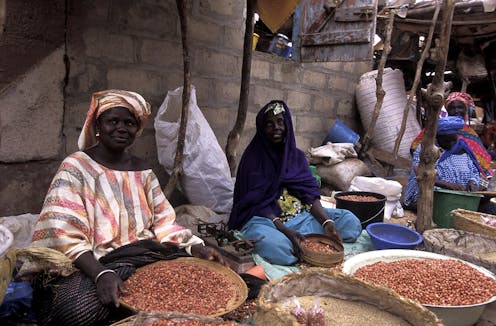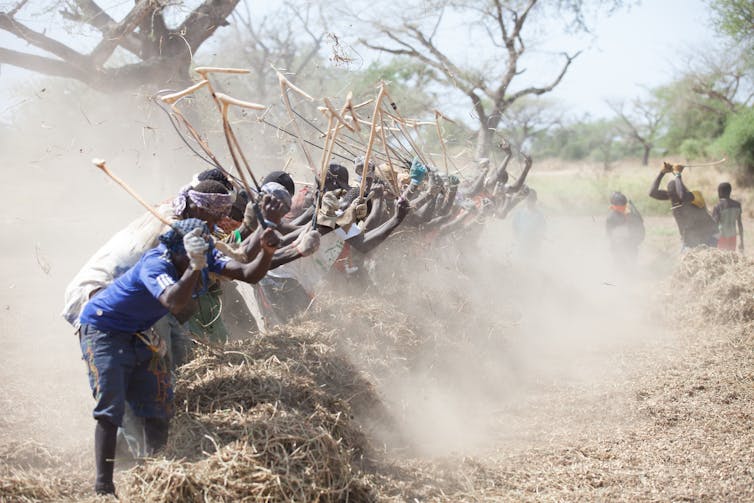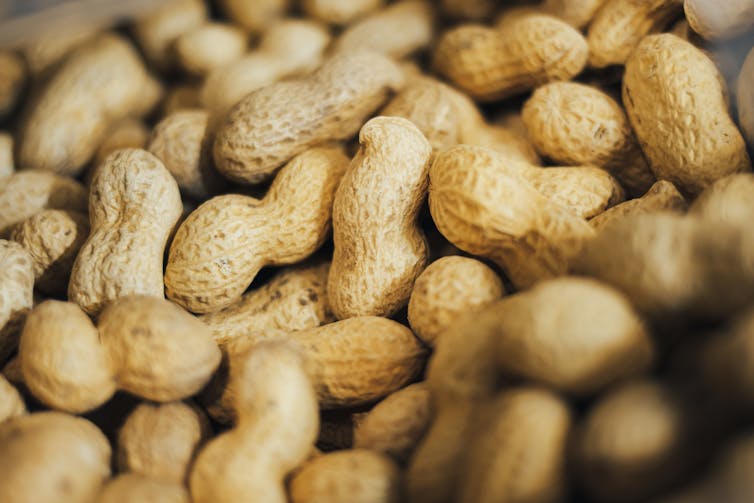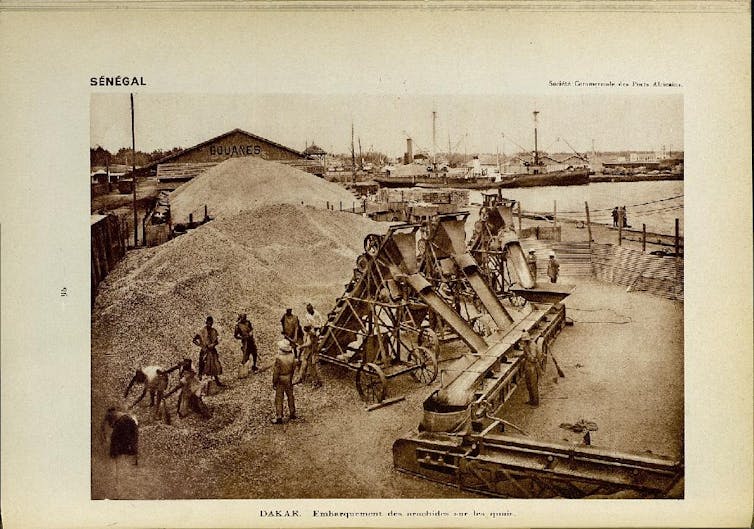
The effects of climate change often fall hardest on the poorest – and smallholder farmers in developing countries are among those most at risk. With limited savings, limited access to credit, and uncertain access to land, water and so on, poorer farmers are unable to cope with increasingly frequent natural disasters, bad growing seasons or the degradation of agricultural land.
Because of this, building resilience to climate change among smallholders is a major focus of development agencies and philanthropic organisations including the World Bank, Food and Agriculture Organisation, and Gates Foundation. Current solutions often focus heavily on individuals and households, for instance by improving access to insurance or more drought-resistant seed.
This is all very well, but such a focus tends to overlook the deeper historical roots of vulnerability to climate change and so fails to consider the longer term. Across much of the developing world, the historic legacies of colonialism play a very important role in shaping vulnerabilities in the first place. This is true in the general sense that patterns of inequality are often very strongly shaped by colonial legacies, but also in more specific ways.
For example, in my research on the history of debt, drought, and peanut cultivation in Senegal, I’ve shown how climate vulnerability is rooted in patterns that developed during the early 20th century.

The peanut boom
Peanut farming in Senegal is mostly reliant on rainfall for water. As a result, it’s particularly vulnerable to fluctuations in annual rainfall. There have been severe droughts and failed crops several times in the last decade, and a catastrophic drought through most of the 1970s and 1980s had lasting impacts on vegetation and soil quality.
Peanut growing areas, which cover 40% of Senegal’s agricultural land, are still significantly less likely to have access to irrigation, and disproportionately affected by fluctuations in rainfall. This is even true in comparison to other areas in Senegal, where horticultural production was adopted starting in the 1980s, and the Senegal River Valley, where rice has emerged recently as a major export crop.
Peanut growers’ reliance on rainfall is in fact the product of very specific historical circumstances. Peanuts aren’t a native species. They were introduced from South America in the 16th century, likely by Portuguese traders. They were initially cultivated in small quantities, along with a range of other subsistence and commodity crops, in the Gambia river basin.
This changed in the mid-19th century. The French were concerned about their growing reliance on British-controlled India for plant oils, and sought to encourage imports from their own colonies. This coincided with the end of the Atlantic slave trade. Slaveholders in West Africa were pushed to redeploy slave labour in producing peanuts for export, rather than selling enslaved people themselves.

As a result, peanut exports from Senegal boomed in the second half of the 19th century. In 1840, an estimated metric ton of nuts were exported. The equivalent figure in 1898 was 95,000. Export volumes continued to grow steadily until the mid-1920s. Peanuts consistently made up roughly 90% of exports from Senegal, and often about half of exports from French West Africa overall.
Climate vulnerability in Senegal today is shaped profoundly by the way that peanut cultivation and export were organised during this long boom.
Climate vulnerability
One important factor was a shift in the epicentre of production away from the Gambia river basin. This was driven by the need to expand the amount of land under cultivation, and by the development of transport infrastructure.
The first railway line in the territory, built in 1885 and running between major coastal cities of Dakar and St Louis, was particularly important. Thiès, a trading post along the line, became a crucial hub for the expanded peanut trade. Notably, Thiès was far from either major river basin in the country and in semi-arid terrain. The area had soils that were well-suited to peanut cultivation. But rainfall was the only available source of water for crops. Farmers in this area were made much more vulnerable to fluctuating rainfall as a result.

Another significant factor was the reliance of major trading firms on credit and debt as means of controlling crops and cultivation. Trading firms were able to control peanut exports by making loans to farmers during the dry season, which were paid back out of harvests. In this way, commercial trading companies obtained crops for export at very low cost, and without assuming the risks associated with investing in agricultural production.
And so traders depended on the vulnerability of farmers to changing seasonal patterns of rainfall. If farmers had had more regular incomes or other means of accessing survival needs during the dry season, the trading economy couldn’t have worked in the way that it did.
In short, climate vulnerability was baked in to the colonial economy. This is true both in the kinds of infrastructures that were and weren’t built, and in the way that the peanut trade operated. The colonial administration and French businesses controlled lucrative activities facilitating the export of agricultural goods. They left agricultural production itself, which was riskier and less rewarding, to Senegalese peasants.
Why does this matter?
This example shows that deep rooted differences in the development of infrastructures, in patterns of investment, and in access to inputs are at the root of contemporary vulnerabilities. Better seeds, improved farming practice, or access to insurance might blunt some of the risks involved for some farmers, but at best these kinds of measures can only address the superficial reasons for climate vulnerability, rather than the deep-lying legacies of colonialism.
This means that climate vulnerabilities will prove very difficult to address properly without a further-reaching rethinking of development models. This likely requires significant transfers of resources from the historic beneficiaries of colonial economies to those who remain systematically disadvantaged by the legacies of colonialism.

Nick Bernards receives funding from the Social Science and Humanities Council of Canada.
This article was originally published on The Conversation. Read the original article.







